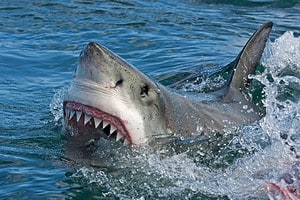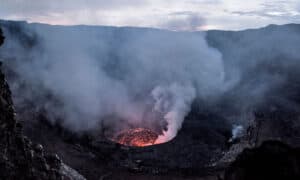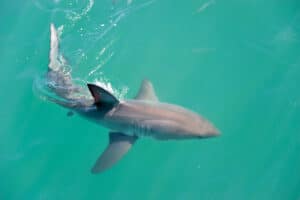If you frequent the waters of California’s Central Coast, you may be wondering if great white sharks are in the area. One of the more popular spots for swimming and surfing in the region is Morro Bay. So, are there great white sharks in Morro Bay? And if so, is it safe to swim?
This guide focuses on what shark biologists say about great white shark populations in and around Morro Bay, if any attacks have occurred in the past few years, and tips for sharing the ocean with these magnificent animals.
An Overview Great White Sharks (Carcharodon carcharias)
The great white shark (Carcharodon carcharias), or simply white shark, as scientists refer to them, is an apex marine predator. These stunning animals can live about 70 years and inhabit every ocean. Although they most frequently occur in temperate waters. White sharks can measure over 20 feet long and weigh up to 4,500 pounds. They are highly migratory and travel to hunt, follow ideal water temperatures, and reproduce. In North America, great whites tend to spend the warm months in the North Pacific and North Atlantic Oceans. They are more common in the southern reaches of North America’s waters in late fall and winter.
Great white sharks are skilled, opportunistic hunters and enjoy a diverse diet of fish, invertebrates, and marine mammals. What foods they primarily eat depends on their life stage. Juvenile white sharks focus on hunting bottom-dwelling fish, smaller sharks and rays, schooling fish, and squid. As adults, larger great whites primarily hunt marine mammals such as seals and sea lions.
By the 1970s, commercial fishing, bycatch, trophy hunting, entanglement, and habitat degradation resulted in the world’s population of white sharks plummeting by over 50%. Today, after decades of conservation work, the white shark population is making an impressive comeback, especially off the coasts of North America. While this may frighten or concern some people, this increase in population is amazing news. Sharks are a crucial part of the ocean’s ecosystem. As a result of human’s dependence on a healthy ocean, white sharks are also crucial to the health of our species. We live in an interdependent web of life in which these beautiful sharks are integrally intertwined.
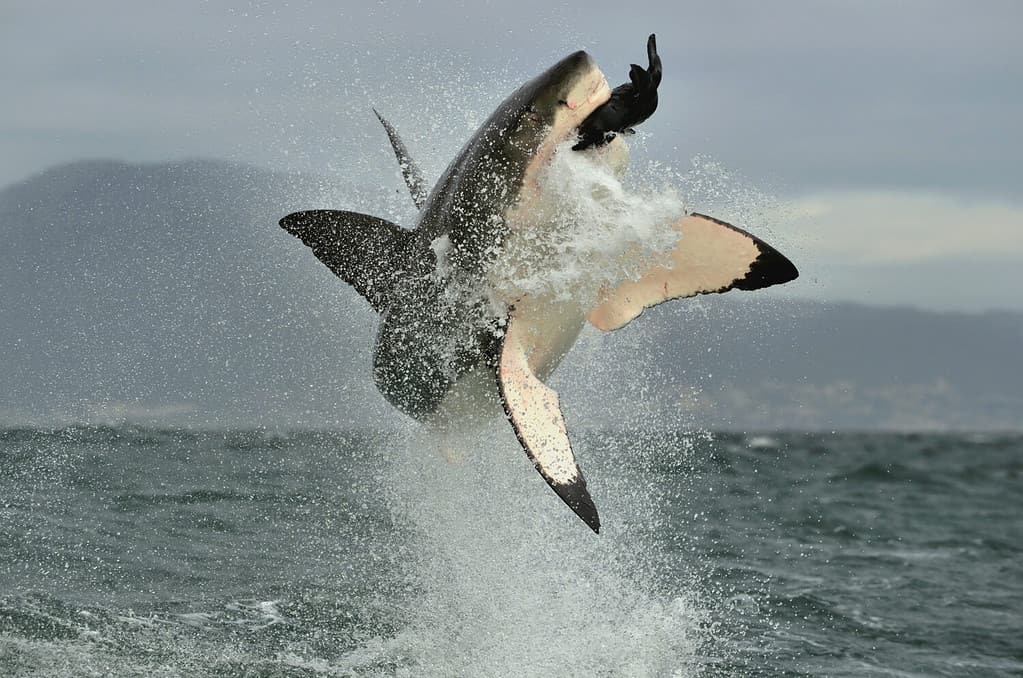
White sharks are powerful marine predators that can inhabit the world’s oceans.
©Sergey Uryadnikov/Shutterstock.com
Great White Sharks of Central California
The population of white sharks that use the Central Coast of California as their primary home is steadily increasing, according to shark biologists. This is partly due to increased conservation efforts in 1994 directed explicitly at California’s white shark population. In particular, an 8-year study published in the journal Biological Conservation found that about 300 white sharks call Central California’s coastal waters their primary home for nearly half of the year, and their numbers are slowly growing.
These animals primarily congregate in coastal waters from Bodega Bay, just north of San Francisco, down to Monterey Bay. The shark biologists discovered that most sharks in the area are males and that the juvenile population is holding steady while there is a modest uptick in the adult population. Fewer adult female sharks in the area means the coastal waters of Central California are likely not a breeding ground.
A two-year study published in 2023 by Cal State Long Beach Shark Lab found that the number of young white sharks is rapidly increasing off the coast of Southern California. These juvenile sharks often swim 50 feet from the shore, coexisting with mostly unaware beach-goers. This rapid increase in the population of Southern California’s juvenile white sharks may affect the numbers recorded off the coast of Central California. The researchers speculate that warming waters are pushing white shark nurseries further north. They recently discovered a new nursery in Monterey, off the coast of Central California. These nurseries provide a relatively safe coastal environment for young white sharks to feed and grow before venturing into deeper waters.
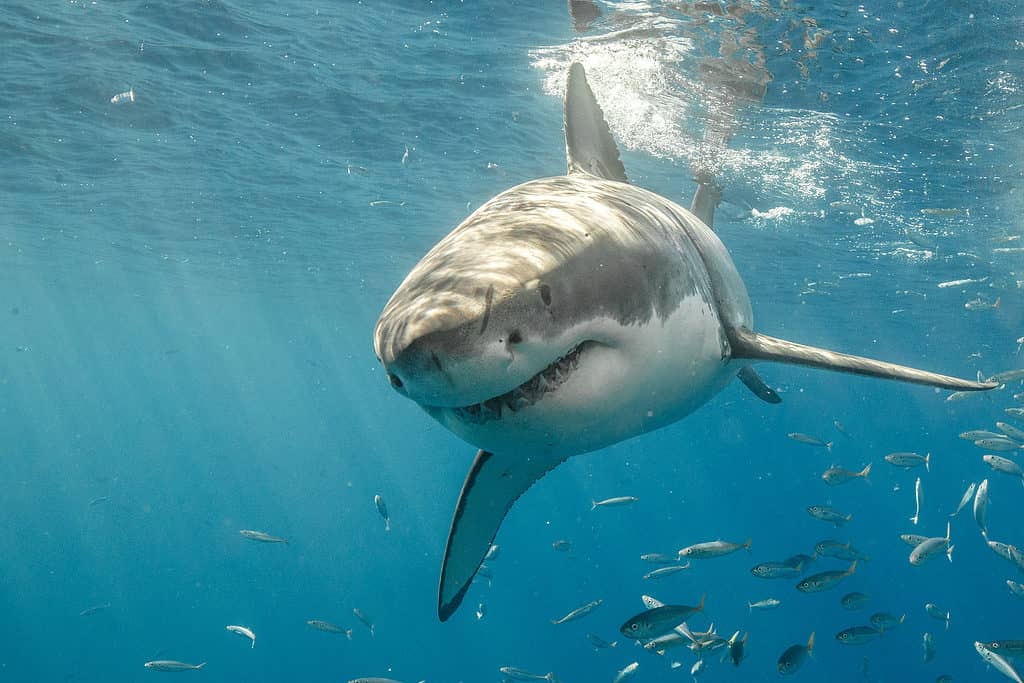
Off Central California’s coast, white shark numbers are expected to increase with rising ocean temperatures.
©iStock.com/ShaneMyersPhoto
Implications for Shark Bites
Researchers found along the Southern Coast that the increase in the white shark population did not lead to a statistical increase in bite rates. We’re not on the menu, so most attacks by great whites involve someone being bitten, often only once, not consumed. For those recreating in the coastal waters of Central California, you can take comfort in this study, both for the health of California’s white shark population and your safety.
Great White Sharks in Morro Bay
Morro Bay is an excellent location for juvenile and adult white sharks. This Bay features a thriving marine ecosystem, including schooling fish, rays, smaller sharks, sea otters, sea lions, and harbor seals. Typically, however, the sharks that stay in the Morro Bay area for an extended period are juveniles. However, adults stop through the area to feed as they migrate; sometimes, they’re huge.
On December 24th, 2021, a shark killed a boogey boarder in Morro Bay. Researchers believe the shark was likely a great white, estimated at 16 feet long. Around the same time, shark researchers tracked a 17-foot-long white shark named Poe Girl, passing through the Bay.
The last fatal shark attack in the area occurred in 2003, making such a tragedy extremely rare, especially considering the number of sharks that routinely coexist in the Bay near swimmers and surfers. To put these numbers into perspective, since 1950, about 200 people have suffered a shark bite off the coast of California, and the majority of these encounters were not fatal. Conversely, each year, about 100 million sharks are killed by humans.
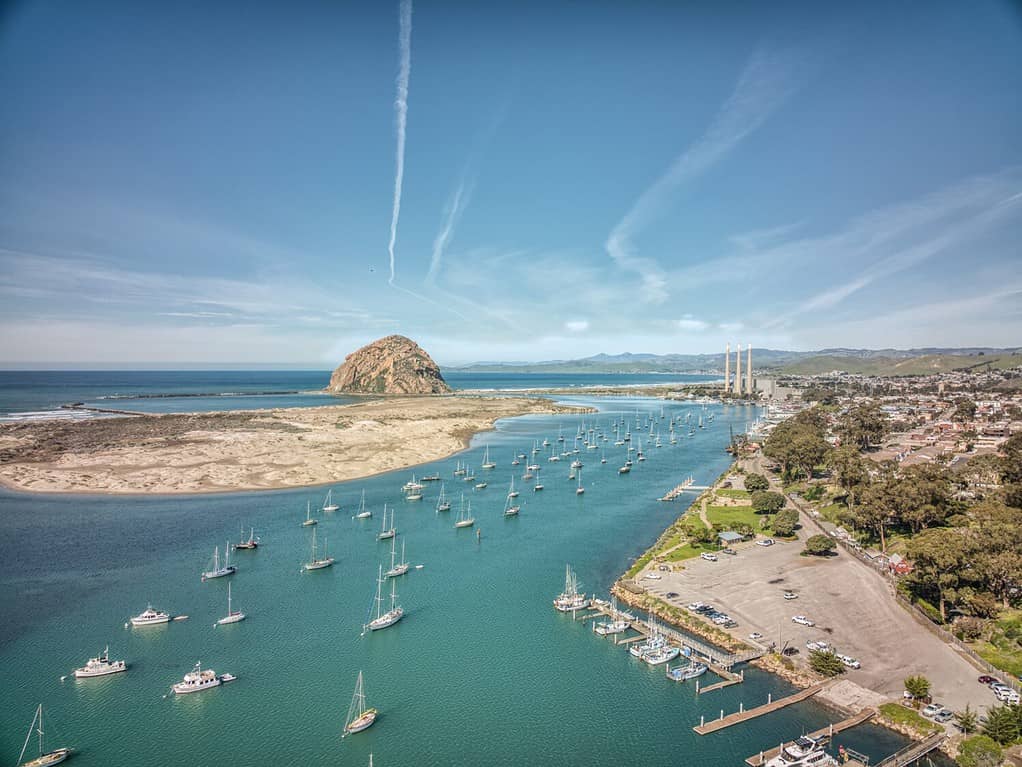
Morro Bay’s rich, biodiverse marine environment especially benefits juvenile white sharks.
©fivetonine/Shutterstock.com
Great White Sharks in Morro Bay: Is It Safe to Swim
As the oceans warm, white sharks, especially juveniles, will likely congregate in larger numbers off the coast of Central California. Adult white sharks pass through the area as they seasonally migrate up and down the coast. The rich biodiversity of Morro Bay makes the area an excellent feeding area for juvenile and adult white sharks.
With all this information, you may think that taking a dip in Morro Bay is a fool’s mission. However, it’s important to remember that we’re not on the menu of white sharks. The vast majority of bites from great white sharks are test bites. They typically bite once, quickly realize they don’t want to consume our puny human flesh and move on in search of their preferred prey. Unfortunately, the power of great white bites can mean that even a test bite can be fatal. Still, according to the International Shark Attack File, your chances of being killed by a shark in the U.S. are about 1 in 4.3 million. Conversely, your chances of drowning are 1 in 1,134.
Ultimately, even with an increase in great white sharks in Morro Bay, you’re unlikely to encounter these amazing animals negatively. Additionally, you can further reduce the already minuscule risk of a shark attack. Shark experts say the best actions you can take are to swim and surf in groups, avoid areas where you see dead marine animals, don’t swim at night or dusk, and heed posted warnings if large white sharks are in the area.
The photo featured at the top of this post is © iStock.com/ELizabethHoffmann
Thank you for reading! Have some feedback for us? Contact the AZ Animals editorial team.




